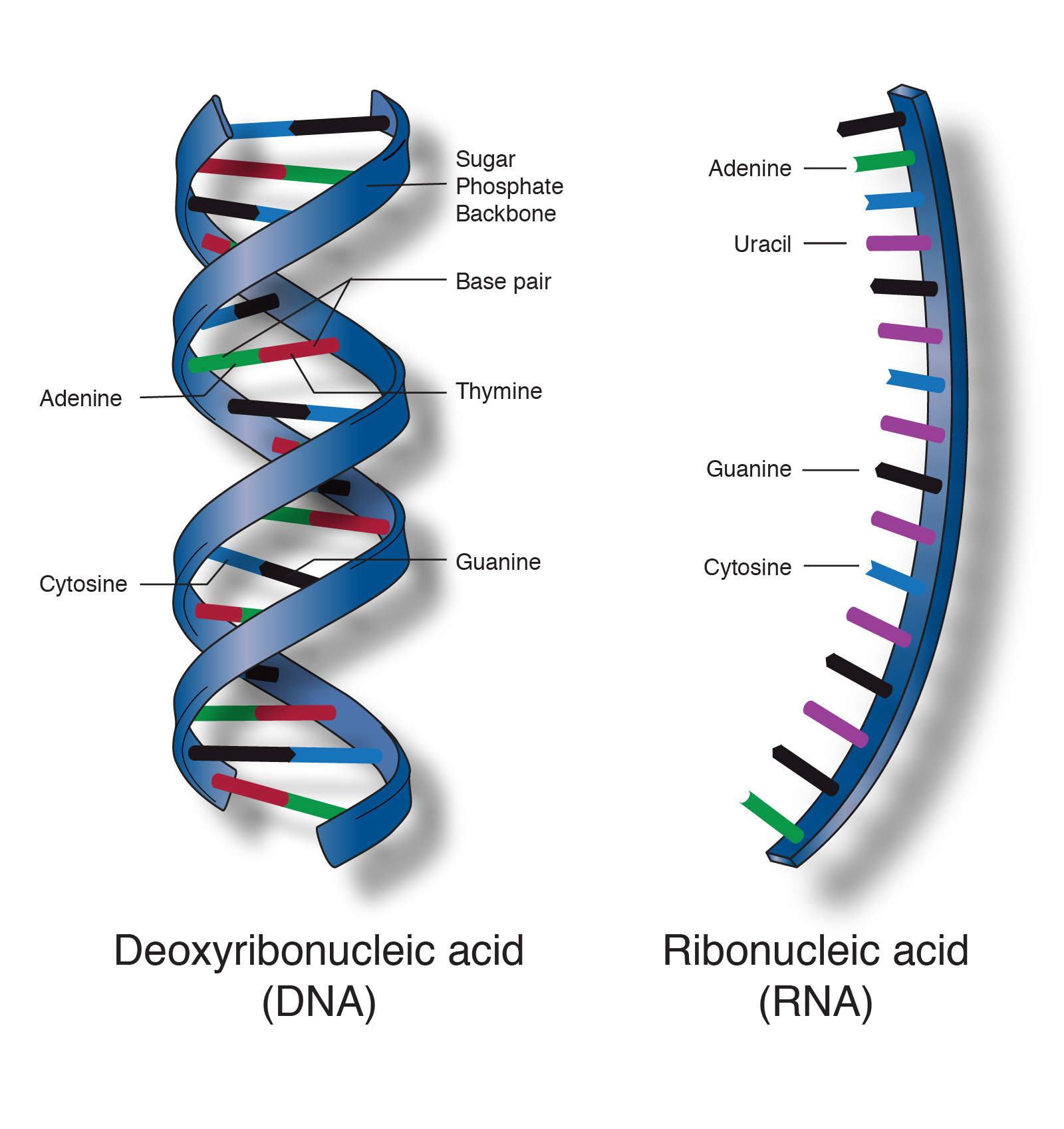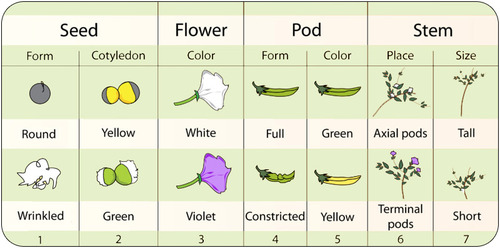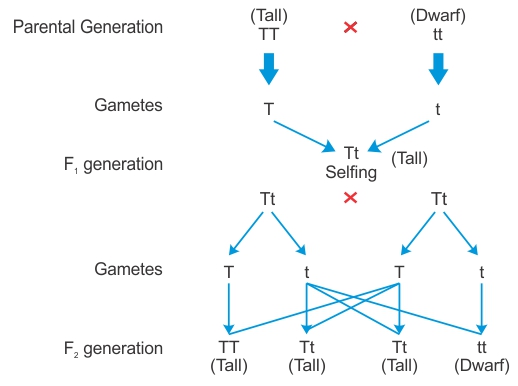Heredity is the biological process through which parents transmit genetic information, traits, and characteristics to their offspring.
A gene is a piece of DNA that carries instructions for making proteins, which determine traits and characteristics in living organisms. It help in the transmission of hereditary characteristics from parents to offspring. It also help in evolution by processes like mutation and genetic recombination.
The branch of biology that deals with the study of genes is called genetics.
Cell division
Cell division is the process by which a cell splits into two or more new cells, allowing for growth, repair, and reproduction in living organisms.
The two main types of cell division are mitosis and meiosis.
Mitosis results in two identical daughter cells and is used for growth, repair, and asexual reproduction.
Meiosis produces four genetically diverse daughter cells with half the number of chromosomes, and is essential for sexual reproduction.
Both mitosis and meiosis cell division are complete in two phases: Karyokinesis and cytokinesis. The division of the nucleus is called karyokinesis, followed by the division of cytoplasm is along with the cell membrane, is called cytokinesis. Mitosis forms two identical daughter cells (somatic or vegetative cells) whereas meiosis forms four genetically diverse daughter cells (gametes).
Mitosis cell division
Mitosis cell division occurs in all cells of the body except reproductive cells. Mitosis is a type of cell division that results in two identical daughter cells, each with the same number of chromosomes as the parent cell. It is essential for growth, tissue repair, and asexual reproduction in living organisms. There is no change in the number of chromosomes in the daughter cells formed by mitotic cell division. Hence, this type of cell division is also called equational division.
Steps of Mitosis
- Prophase:
- The chromosomes condense and become visible.
- The nuclear membrane begins to break down.
- Spindle fibers start to form from the centrosomes.
- Metaphase:
- The chromosomes line up in the middle of the cell.
- Spindle fibers attach to the centromeres of the chromosomes.
- Anaphase:
- The spindle fibers pull the sister chromatids apart to opposite sides of the cell.
- Each chromatid is now considered an individual chromosome.
- Telophase:
- The chromosomes reach opposite ends of the cell.
- A new nuclear membrane forms around each set of chromosomes.
- The chromosomes begin to uncoil and return to their relaxed state.
- Cytokinesis:
- The cell membrane furrows in the middle, dividing the cytoplasm and creating two separate daughter cells.
- Each daughter cell has the same number of chromosomes as the original parent cell.
By the end of mitosis, you have two identical cells ready to perform their functions in the body.
Significance of mitotic cell division
- It helps regenerate cells in injured areas, returning them to their original state.
- It maintains genetic stability.
Meiosis cell division
Meiosis is a type of cell division that reduces the number of chromosomes by half, resulting in four genetically diverse daughter cells. This process is essential for sexual reproduction and the formation of gametes (sperm and eggs) in animals and spores in plants. Meiosis consists of two consecutive divisions: Meiosis I and Meiosis II. Each has its own stages.
Steps of Meiosis
Meiosis I
- Prophase I:
- Chromosomes condense and become visible.
- Homologous chromosomes (pairs of similar chromosomes from each parent) pair up and exchange segments in a process called crossing over.
- The nuclear membrane breaks down, and spindle fibers form.
- Metaphase I:
- Homologous chromosome pairs line up in the middle of the cell.
- Spindle fibers attach to the centromeres of each chromosome.
- Anaphase I:
- Spindle fibers pull the homologous chromosomes apart to opposite sides of the cell.
- Each chromosome still consists of two sister chromatids.
- Telophase I:
- Chromosomes reach opposite ends of the cell.
- A new nuclear membrane forms around each set of chromosomes.
- The cell begins to furrow, preparing for cytokinesis.
- Cytokinesis (Meiosis I):
- The cell membrane furrows, dividing the cytoplasm and forming two non-identical daughter cells, each with half the number of chromosomes as the original cell.
Meiosis II
- Prophase II:
- Chromosomes condense again in the two new cells.
- The nuclear membrane breaks down, and spindle fibers form.
- Metaphase II:
- Chromosomes line up in the middle of each cell.
- Spindle fibers attach to the centromeres of the sister chromatids.
- Anaphase II:
- Spindle fibers pull the sister chromatids apart to opposite sides of each cell.
- Each chromatid is now an individual chromosome.
- Telophase II:
- Chromosomes reach opposite ends of each cell.
- New nuclear membranes form around each set of chromosomes.
- The cells begin to furrow, preparing for cytokinesis.
- Cytokinesis (Meiosis II):
- The cell membranes furrow, dividing the cytoplasm and forming a total of four non-identical daughter cells, each with half the number of chromosomes as the original parent cell.
By the end of meiosis, we have four genetically diverse cells that are ready to develop into gametes for sexual reproduction.
Significance of meiosis cell division
- It plays main role in the sexual reproduction of organisms.
- It helps in evolution by bringing variation.
Deoxyribonucleic acid (DNA)
DNA is a double-helix molecule composed of two strands that are twisted around each other. Each strand is made up of nucleotides. DNA consist of two antiparallel strands.
Nucleotides: Each nucleotide consists of a sugar molecule (deoxyribose), a phosphate group, and a nitrogenous base (adenine (A), thymine (T), cytosine (C), or guanine (G)). Adenine pairs with thymine (A-T) and cytosine pairs with guanine (C-G).
Function: DNA contains the genetic instructions for the development, functioning, growth, and reproduction of all living organisms.
Ribonucleic acid (RNA)
RNA is typically single-stranded and composed of nucleotides. Each nucleotide in RNA consists of a sugar molecule (ribose), a phosphate group, and a nitrogenous base (adenine (A), uracil (U), cytosine (C), or guanine (G)).
In RNA, adenine pairs with uracil (A-U) and cytosine pairs with guanine (C-G).
There are three types of RNS which are messenger RNA (m-RNA), transfer RNA (t-RNA) and ribosomal RNA (r-RNA). The main function of RNA is to synthesize proteins.

Chromosome
A chromosome is a long, thread-like structure made of DNA and proteins that carries genetic information. The chromosome has mainly two parts: chromatid and centromere. Chromatids are the two arms of the chromosome. Sister chromatids are the identical copies found in the replicated chromosome. The knot -like structure of the chromosome where two chromatids are connected is called the centromere.
Types of chromosomes
Based on function, chromosomes can be classified into two types:
Autosomes: These are chromosomes that determine the somatic (body) characteristics of an organism. Humans have 22 pairs of autosomes, making a total of 44 autosomes.
Sex Chromosomes: These chromosomes determine the sex of an organism and are involved in sexual reproduction. Humans have one pair of sex chromosomes, making a total of 2 sex chromosomes. In humans, females have two X chromosomes (XX), and males have one X and one Y chromosome (XY).
Based on the location of the centromere, chromosomes can be classified into four types:
Metacentric Chromosomes: The centromere is located in the middle, resulting in two arms of equal length.
Submetacentric Chromosomes: The centromere is slightly off-center, creating one arm that is longer than the other.
Acrocentric Chromosomes: The centromere is significantly off-center, producing one very long arm and one very short arm.
Telocentric Chromosomes: The centromere is located at the end of the chromosome, resulting in only one arm.

Number of chromosomes
Different organisms have varying numbers of chromosomes. The number of chromosomes is species-specific and can vary widely:
- Humans: 46 chromosomes (23 pairs)
- Rice: 24 chromosomes (12 pairs)
- Dogs: 78 chromosomes (39 pairs)
Generally, two sets of chromosomes are found in a somatic cell called diploid (2n). One set of chromosomes is found in a gamete called haploid (n). For example, a human somatic cell contains 46 chromosomes, which is diploid. Human gametes, either sperm or ovum contain 23 chromosomes, which is haploid.
Role of sex chromosomes in the determination of sex in humans
Humans have two types of sex chromosomes, X and Y, that play a crucial role in determining an individual’s sex. The combination of these chromosomes inherited from the parents decides whether a person is male or female.
- XX – Female:
- If an individual inherits two X chromosomes, one from each parent, they will develop as female.
- Females have a XX sex chromosome pair.
- XY – Male:
- If an individual inherits one X chromosome from the mother and one Y chromosome from the father, they will develop as male.
- Males have a XY sex chromosome pair.
Heredity and Mendelism
Gregor Johann Mendel (1822-1884) was the first scientist to propose the law of genetics. Gregor Mendel is called the “Father of Genetics” because of his pioneering work in the study of heredity and the establishment of the fundamental principles of genetics.
Mendel selected the pea plant (Pisum sativum) for his experiment due to the following reasons:
- Distinct and Observable Traits: Pea plants have easily distinguishable traits such as flower color, seed shape, and pod color.
- Controlled Pollination: Pea plants can self-pollinate, ensuring true-breeding plants. Mendel could manually cross-pollinate plants to study different trait combinations.
- Short Generation Time: Pea plants grow quickly, allowing Mendel to observe several generations within a short period.
- Large Number of Offspring: Each plant produces many seeds, providing a large sample size for reliable data.
- Ease of Cultivation: Pea plants are simple to grow and maintain, requiring minimal care.
- Variety of Traits: Mendel had access to pea plant varieties with different traits, facilitating both single-trait and two-trait experiments.
- Previous Research: Existing botanical studies on pea plants provided a solid foundation for Mendel’s experiments.
He studied the following seven contrasting characteristics of the pea plant.

Monohybrid cross and dihybrid cross
A monohybrid cross is a genetic cross between two individuals that are heterozygous for one specific trait. examples: Crossing pea plants with different flower colors (e.g., purple flowers with white flowers). A dihybrid cross is a genetic cross between two individuals that are heterozygous for two different traits. Examples: Crossing pea plants with different seed shapes (round vs. wrinkled) and seed colors (yellow vs. green).
Laws of Mendel
Law of dominance
Mendel’s Law of Dominance states that in a heterozygous individual, one allele can mask the expression of another allele. The allele that masks is called the dominant allele, and the allele that is masked is called the recessive allele.
Examples: In pea plants, height is controlled by a dominant tall allele (T) and a recessive short allele (t). Tall plants can be TT or Tt, while short plants are tt. Crossing a true-breeding tall plant (TT) with a short plant (tt) yields all tall (Tt) offspring. Self-crossing these F1 plants produces a 3:1 ratio of tall to short plants in the F2 generation, demonstrating Mendel’s law of dominance.

Law of segregation or law of purity of gametes
Mendel’s Law of Segregation, also known as the Law of Purity of Gametes, states that during the formation of gametes (sperm and egg cells), the two alleles for each gene separate, or segregate, from each other. As a result, each gamete carries only one allele for each gene.
For example, when self-pollination is performed among the progeny obtained in the first filial generation, the genes of the hybrid alleles separate, and hence tall and dwarf plants are produced in the second generation. The ratio of tall and dwarf plants is 3:1
Genetic technology
Genetic technology refers to a range of techniques, tools, and methods used to manipulate and modify the genetic material (DNA or RNA) of living organisms. In this process, a new trait is developed by changing a single nitrogen base pair (A-T or C-G), deleting or adding a gene in the DNA.
Applications
Medicine: Developing personalized medicine, gene therapy, and diagnostic tools.
Agriculture: Creating crops with improved yield, pest resistance, and nutritional value.
Genetic Engineering
It involves altering the genetic makeup of an organism, such as creating genetically modified organisms (GMOs) with desirable traits (e.g., pest-resistant crops).
Gene Cloning
The process of creating copies of specific genes or segments of DNA, which can be used for research, medicine, or biotechnology. Dolly the sheep was the first mammal to be successfully cloned from an adult somatic cell.
Role of DNA testing in various investigations
DNA technology has made it easier to investigate various criminal cases and identify the guilty. It is also used for paternity testing
Breeding
Breeding is the process of mating selected plants or animals to produce offspring with desired traits.
Inbreeding: Mating individuals that are closely related genetically. This can help preserve specific traits but may also increase the risk of genetic disorders.
Outbreeding: Mating individuals from different genetic backgrounds to increase genetic diversity and improve traits.
Selective breeding
Selective breeding, also known as artificial selection, is the process of choosing individuals with desirable traits to reproduce in order to enhance those traits in the next generation.
Examples:
a) Different dog breeds are selectively bred for specific characteristics, such as size, coat type, and temperament.
b) Apples and oranges are selectively bred to improve flavor, size, and resistance to diseases.
Some methods of Selective Breeding
Inbreeding: It is the process or act of breeding between males and females who are closely related genetically. It helps to bring uniformity in characteristics of that animal/organism.
Line breeding: Line breeding is the process or act of breeding between males and females who are second degree relatives of each other. For example, breeding from a line of German Shepherds known for their strong working capabilities can produce puppies with enhanced traits for police or search-and-rescue work.
Self pollination: Self-pollination occurs when a plant fertilizes itself, with pollen from its own flowers or from a different flower on the same plant fertilizing its ovules. This method helps to produce genetically identical plants.
Cross breeding: Cross-breeding involves mating individuals from different genetic backgrounds, species, or varieties to combine desirable traits from both parents. This method is used to introduce new traits and enhance genetic diversity.
Examples:
Liger: A liger is the hybrid offspring of a male lion and a female tiger.
Tigon: A tigon is the hybrid offspring of a male tiger and a female lion
Beefalo: Beefalo are hybrids between domestic cattle (Bos taurus) and American bison (Bison bison).
Zebroid: A zebroid, also known as a zorse, is a hybrid between a zebra and a horse.
Mule: A mule is produced by crossing a male donkey (jack) with a female horse (mare).
Hinny: A hinny is the hybrid offspring of a male horse (stallion) and a female donkey (jenny).
Pomato: A pomato is a plant hybrid created by grafting a tomato plant (Solanum lycopersicum) onto a potato plant (Solanum tuberosum).
Advantages:
a) Cross-breeding can lead to offspring with enhanced traits such as increased yield in crops, better growth rates in animals, or improved disease resistance.
b) By introducing new genetic material, cross-breeding increases genetic diversity, which can improve the adaptability of the offspring to various environmental conditions
Disadvantages:
a) The traits of hybrid offspring can be less predictable, leading to unexpected or undesirable characteristics.
b) Cross-breeding can involve significant costs in terms of time, resources, and expertise.
Artificial insemination
Artificial Insemination (AI) is a reproductive technology used to introduce sperm into the female reproductive tract by means other than natural mating. This technique is commonly used in animal breeding and human fertility treatments.
Advantages:
a) AI allows the use of sperm from high-quality males that may be geographically distant. This enables the introduction of superior genetic traits into a breeding population, leading to improved performance and productivity.
b) AI minimizes the physical contact between animals, reducing the risk of transmitting sexually transmitted diseases and parasites.
Disadvantages:
a) The process of collecting, processing, and storing semen, as well as performing the insemination, can be expensive.
b) The success rates of AI can vary depending on factors such as the quality of the semen, the timing of insemination, and the health of the female.
In vitro fertilization/ Test-tube conception
In Vitro Fertilization (IVF) is a reproductive technology that involves fertilizing an egg outside the body and then implanting the resulting embryo into the uterus. IVF is commonly used to assist individuals or couples facing infertility challenges.
Advantages:
a) IVF is effective for treating various causes of infertility, including male infertility, and ovulation disorders.
b) Fertilization and early embryo development occur in a controlled laboratory environment, allowing for precise monitoring and management.
Disadvantages:
a) IVF can be expensive, with costs associated with medications, procedures, laboratory work, and consultations.
b) Success rates for IVF can vary depending on factors such as age, underlying health conditions, and the quality of embryos. Not all IVF cycles result in pregnancy.

Sir, I don’t know this question.
How does the concentration of sodium thiosulphate affect the rate of chemical reaction in between the hydrochloric acid and sodium thiosulphate? Write the chemical equation of the reaction between more Active metal and more Active non- metal.
The concentration of sodium thiosulphate is directly proportional to the rate of the reaction with hydrochloric acid. Higher concentrations result in faster reaction rates, while lower concentrations slow down the reaction. So, the concentration of reactants is a key factor in determining the speed of a reaction.